I recently obtained a 2020 Honda HRV and I wanted to add HF to it. My FT857D and Yaesu ATAS120 mobile HF antenna was collecting dust. I wanted to get back into doing HF mobile since I had the ability to do it again.
Looking at options, I ordered a Lido mount to attach both the FTM300D and FT857D heads.
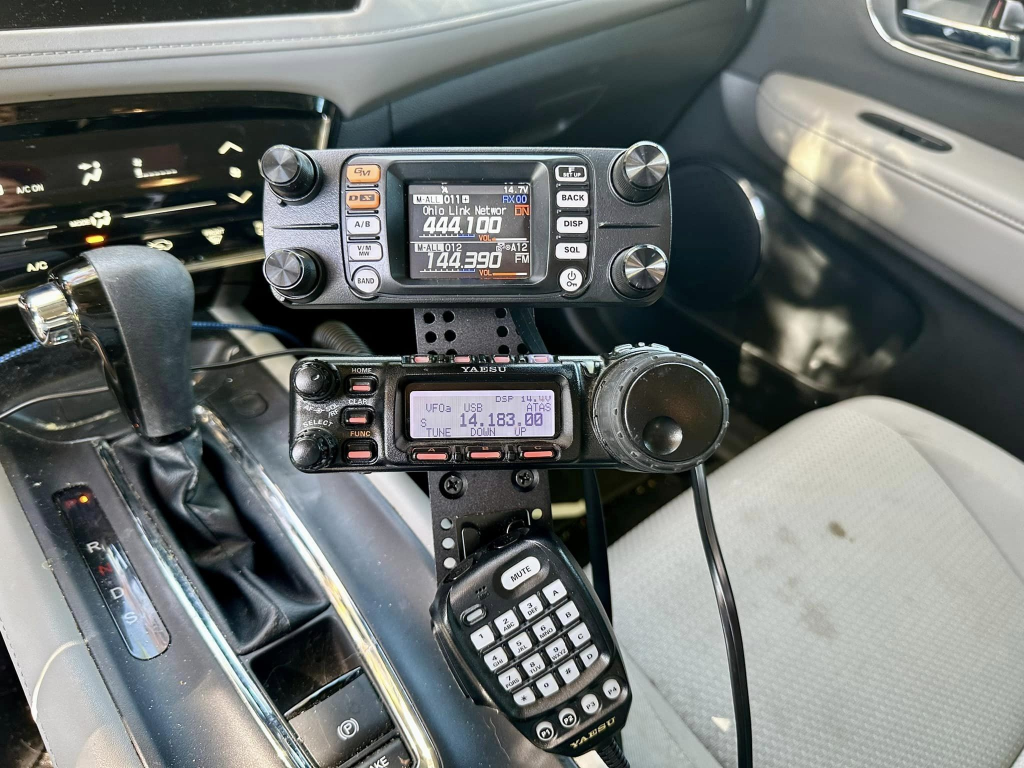
I purchased a Diamond K400 trunk and hatchback mount from DXEngineering for the ATAS120. I made sure the screws broke through the paint and clearcoat layer to make good ground connection. I also ordered an LDG RU-1:1 Unun to connect the trunk mount to the radio. This provides good isolation and helps maintain a good match at the antenna connector.
Everything tuned to a great 1:1 match except for 40M.
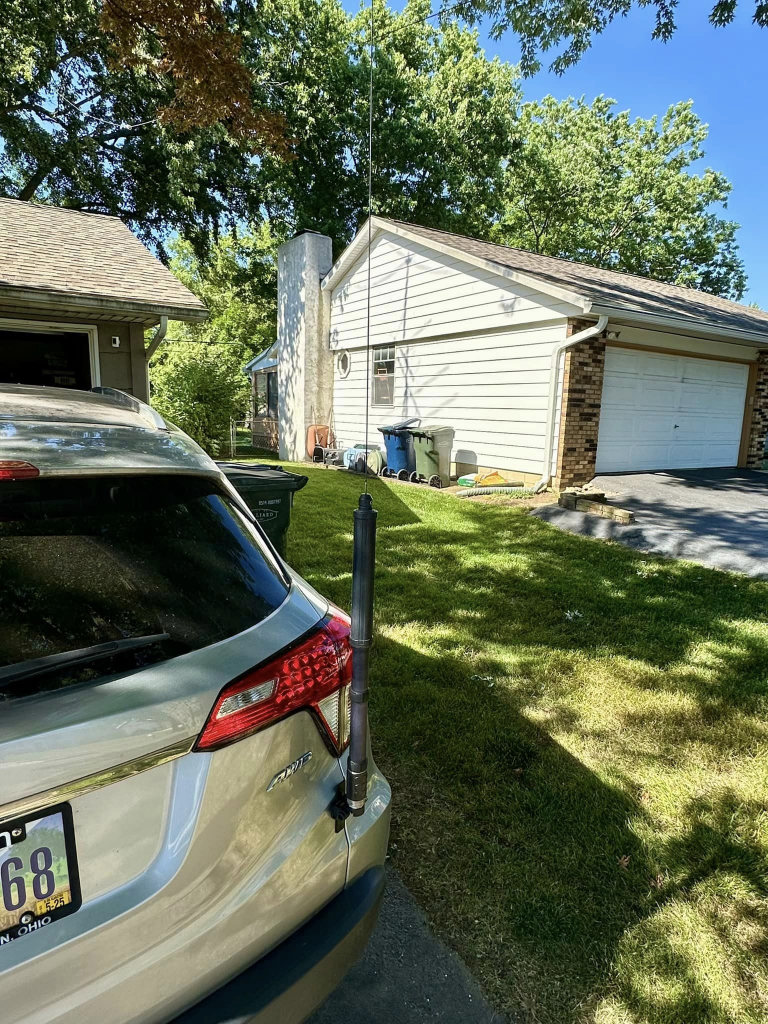
One of the things I like about the ATAS120 is the convenience of the interface with the ATS120. A quick button tap and the antenna tunes.
I later added a SignaLink USB I was using for the FT857D and connected it to my iPhone so that I can make FT8 contacts. A small morse code key was added for CW contacts.
Making it Work
I know that HF mobile installations are compromise installations. I also know that I was not expecting to get the best performance out of it. Based on online research from respectible amateur radio operators that understand this, the car is not necessarily the “ground plane” to the installation. The RF grounds capacitively to the actual ground. The idea is to maximize the ground on the vehicle to get the best coupling to the ground.
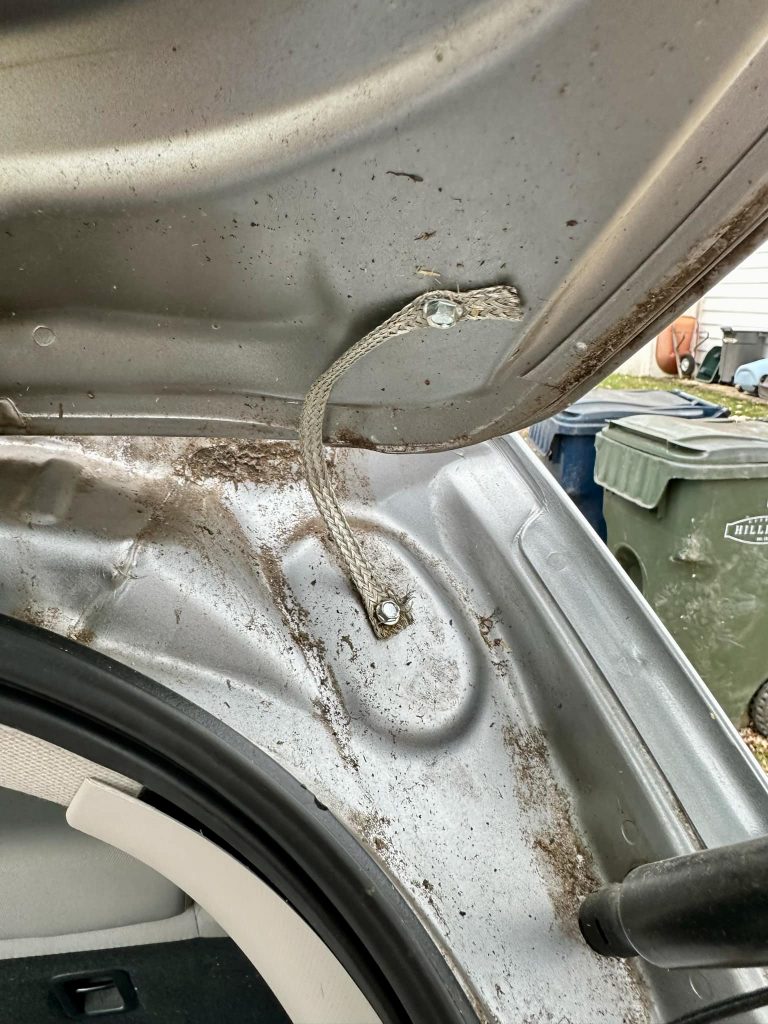
I added a wire braid to bond the tailgate to the rest of the car body. The HRV is a unibody design where the entire body of the car is welded together as a metal cage. I did not have to bond any frames to the body. However, I should bond the doors, the muffler system, and the hood to the rest of the body (which I plan to do).
After bonding the tailgate to the car unibody, 40M tuned up just fine.
How well does it work?
Since installing, I have made several contacts around the world. From the car, I have worked most of Europe, worked into Asia, and even into Australia, New Zealand, Fiji, and Indonesia. This was using FT8 (while parked!).
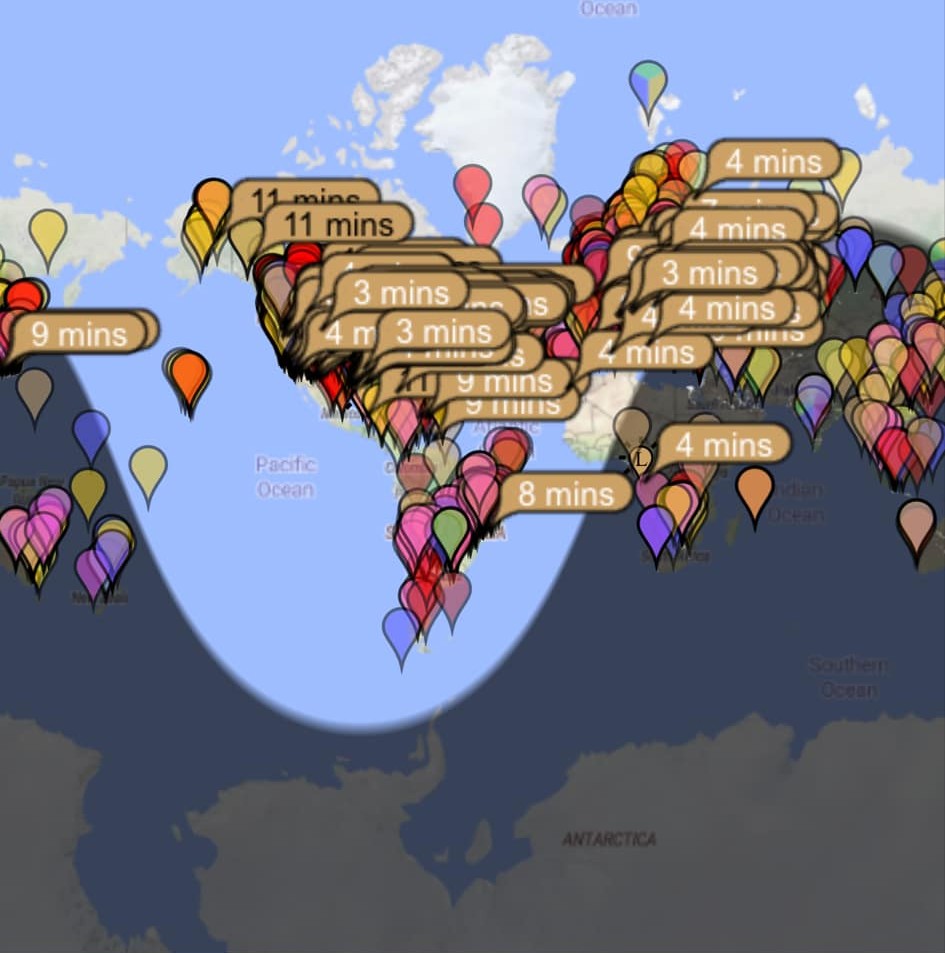
Obviously this is anecdotal evidence and does not necessarily mean I have the best system. Plus, band conditions are very good as of late. But it is fun to park somewhere during lunch, and have fun working DX!
“Mobile” FT8
The app I am using on my iPhone is iFTx by Christoph Nadig. It is well worth the $1.99US price. To interface with the iPhone, I ordered a USB Lightning connector. This connects the SignaLink USB to the iPhone. One of the things you want to do is disable the Bluetooth connection so that it does not interface with your car system. It looks like you have a phone call going on (at least with my Honda).
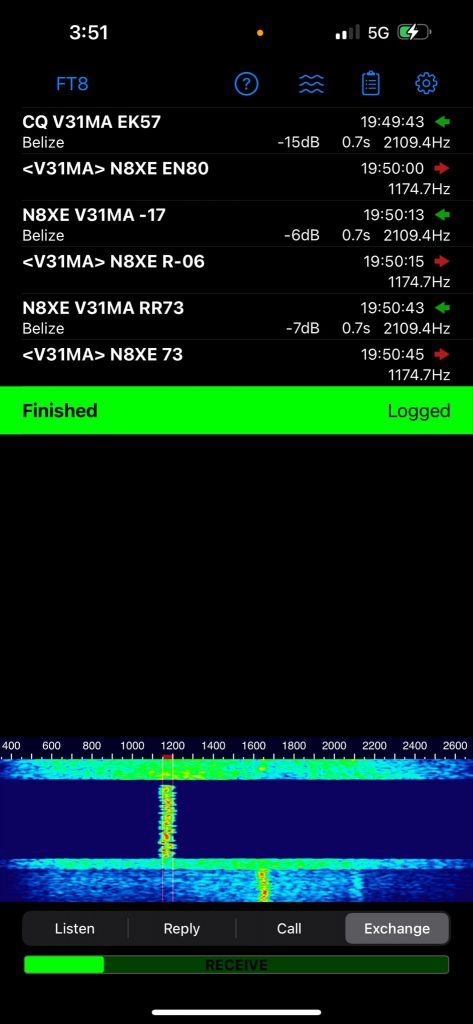
It stores all contacts in a log automatically and allows you to export the log to later be imported into your logging program.
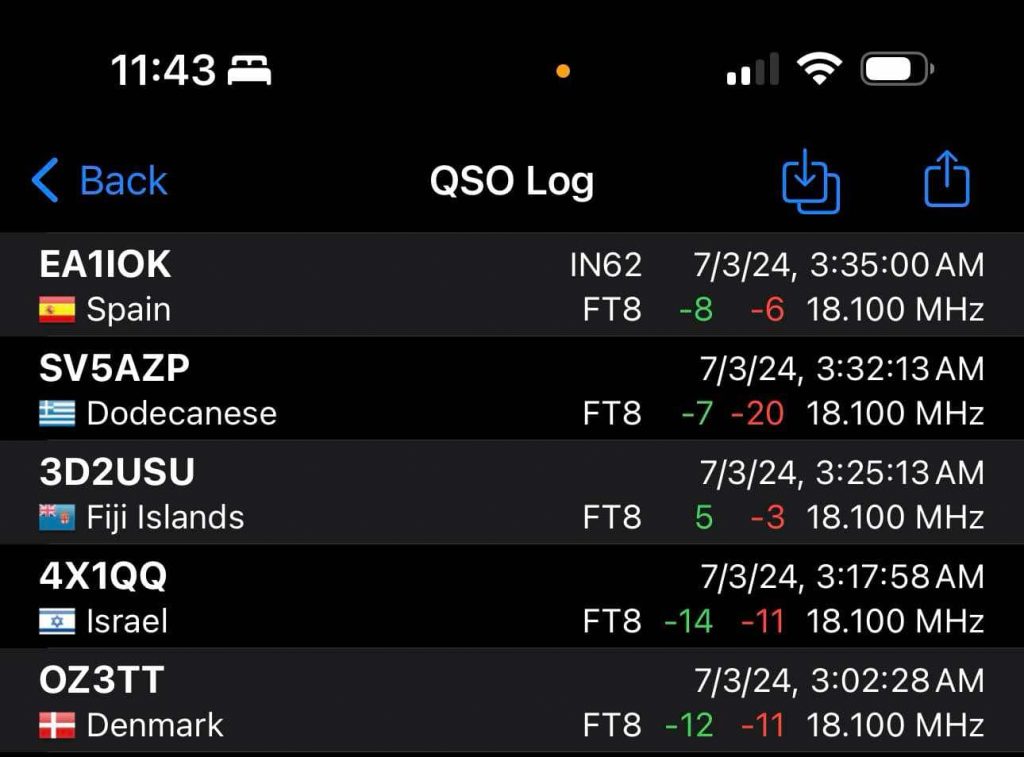
One of the things about iFTx is that it does not appear to connect to your radio for automatic band switching. I have made a few contacts in error because of this. You need to set the band in the iFTx settings. Also, it appears you cannot edit an existing log contact while in the app.
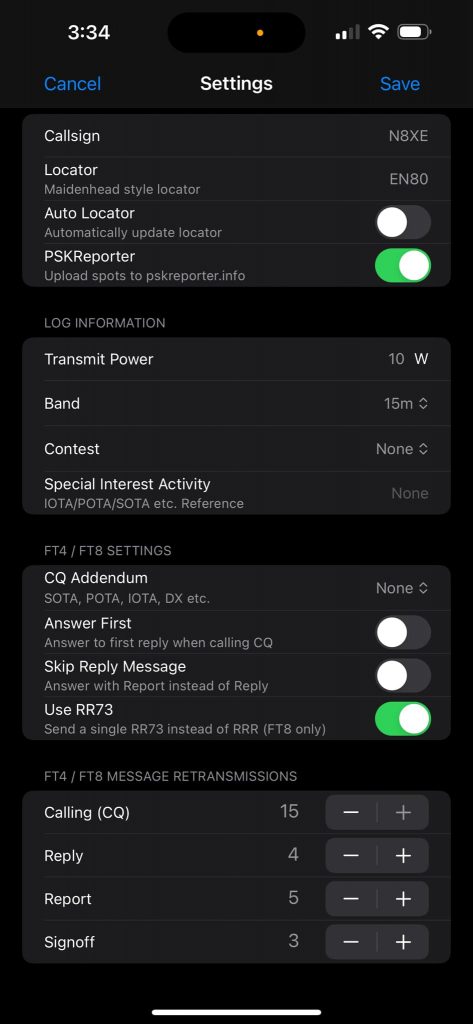
Next Steps
I plan to continue bonding the doors, muffler system, and the hood in the near future. This may make my signal marginally better, but I would like to do this to prevent interference issues with my car. One thing I noticed is that if I am transmitting at full power on 30M, the car’s parking brake system faults. I am glad I am parked!
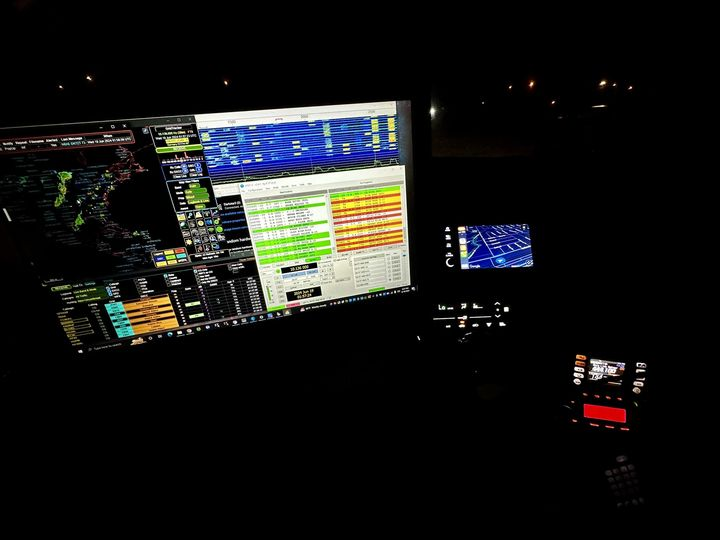
I am enjoying my mobile HF setup as it adds a new dimension to my Ham Radio enjoyment. I am constantly surprised at how well it works (i.e., how the ionosphere is working during this high spot of the subspot cycle!!). Lunch hours out and about is fun!
